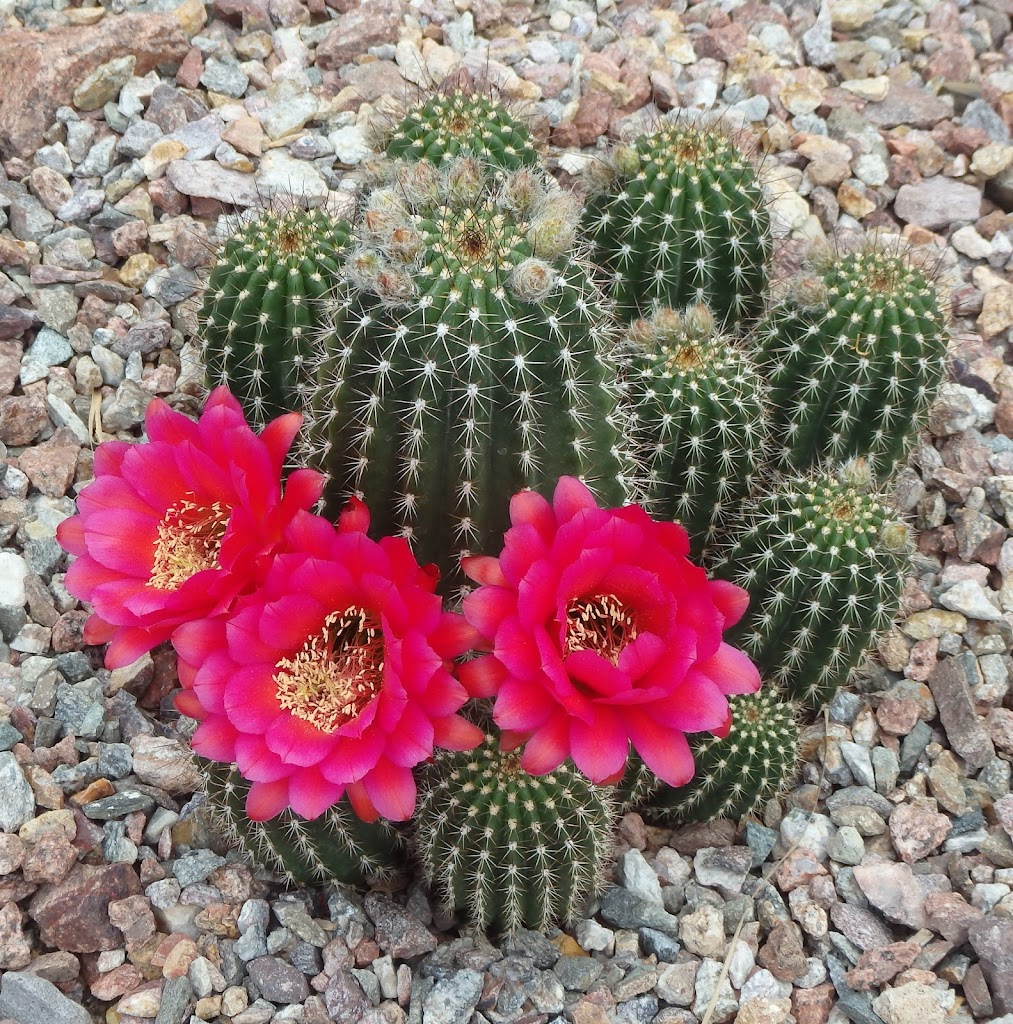Q. I have small white nodules growing on my Indian cactus. Are they harmful? If so, how do I get rid of them? Opuntia Or beaver tail cactus heavily infested with one of the cochineal scale insects. These insects can decimate cacti over time if left uncontrolled. A. I think you are talking about cochineal scale on the Opuntia or beaver tail cactus. This scale insect produces a white, fluffy mass on the pads on top of itself for protection. This insect is feeding underneath this white mass. Rubbing these white masses lightly with your finger, you find a royal purple color staining it. The insect beneath this cottony mass is dark red or purple. This is cochineal scale and makes a royal purple dye. Contrary to what some people have said, this is not the same cochineal scale the Spaniards sent back to Spain in the 1600s but a very close relative. Depends on the cactus but they can devastate a cactus if not controlled. First, control the ants. Ants pick up baby scale insects and transport them to pads that are underpopulated. These new pads are wide open pastures for scale insects to feed. Cochineal scale populate pads quickly. The ants harvest excrement from scale insects to feed their colony. This is a short video of a Weaver ant protecting another type of scale insect from its food supply. In this case, it’s my finger that is seen as a threat and the Weaver ant is protecting its horde aggressively. Video taken on our family farm in the Philippines. Most ants are subterranean. One of the best methods I found to control ants is using a poison bait lightly sprinkled at the entrance to the colony. Usually these “ant holes” in the ground are easy to find but sometimes you must follow the ant trails to find them. (This doesnt work with Weaver ants because they don’t nest in the ground!) I use an ant bait manufactured by Amdro. Follow label directions precisely. When applied correctly, it kills the entire colony, including the queen, in less than twenty-four hours. Borrowed a picture of the am drove container at Home Depot. Thanks to paulmirocha.com Scale insects suck plant juices from the pads and build their populations quickly. Ants help them spread faster. To remove white fluffy masses, spray the pads with a strong stream of water using a spray or sweep nozzle. This knocks the white fluffy covering off but doesn’t kill the insect hiding underneath it. They soon repopulate the pads. In summertime this could be weekly. In winter, perhaps monthly. Hosing off cochineal scale from the edible Opuntia cactus donated to the UNCE orchard by the University of Sonora – Hermosillo for demonstration trials. In the middle of summer, this had to be done weekly which none of the Master Gardeners like to do. If you don’t want to do it organically, which means frequently, then you’re faced with using conventional pesticides. After spraying the pads with water, use organic or conventional insecticides to prevent scale insects, called crawlers, from repopulating the pads. Organic insecticides do not stay in the environment long so spray them more often than conventional insecticides. Neem oil varies in quality from different manufacturers. Unfortunately, there is not much quality control but if you find a good one, stay with it Useful organic insecticides include Neem oil, soap sprays and other plant-based oils. Apply soaps and oils the day after spraying the pads. Reapply organic insecticides often. Organic insecticides I mentioned are total killers; they kill any insect sprayed so direct your sprays accordingly. Conventional systemic insecticides like this one works very well and requires fewer applications. But it is tougher on the environment. Conventional insecticides last longer but are tougher on the environment. Useful conventional insecticides are systemic and applied to the “trunk” or soil. The poison moves into the pads from the point of application. Spray as soon as you see the cotton balls start to form.
